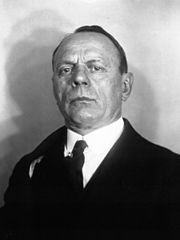Frederick Walker's Human Design Chart
Design
Design
Personality
Chart Properties
Your Cross represents the specific theme of your life. This cross embodies your unique potential & the lessons you're here to learn, providing a roadmap to fulfilling your life purpose.
We use the UTC birth time and date to do the calculations required to generate your Human Design chart.
Buy Tokens
Pay as you use, no expiry and no subscription required.Prompt Ideas
Get inspired with some epic prompt ideas.Frederick Walker's Biography
English social realist painter and illustrator described by Sir John Everett Millais as “the greatest artist of the century”.
Walker was born the elder of twins. His grandfather, William Walker had been an artist of some merit, who had exhibited regularly at the Royal Academy and British Institution between 1782–1802.
He showed a talent for art from an early age teaching himself to copy prints using pen and ink – he also practiced drawing in the British Museum. In March 1858 he was admitted as a student at the Royal Academy, and later that year also became a part-time apprentice wood engraver. In 1859 he joined the Artists’ society in Langham Chambers, and from 1860–65 achieved great success as a black and white illustrator for popular journals.
Walker produced his first important watercolour, “Strange faces” in 1862, and in the following year “Philip in Church” which won a medal at the Paris Exhibition of 1867. Walker exhibited at the “Old Watercolour society” from 1864 until the end of his life. In 1863 Walker exhibited his first oil painting, “The Lost Path” at the Royal Academy of Arts, and thereafter showed “Wayfarers” (1866), “Bathers” (1867) and “Vagrants” (1868).
Walker never married and lived all his life in London with members of his family – a brother, a sister and his mother. In 1873 he travelled to Algiers in an unsuccessful attempt to recuperate from a bout of tuberculosis, which gradually worsened until his death on 4 June 1875 at St. Fillan’s in Perthshire, Scotland.
Link to Wikipedia biography
Your Cross represents the specific theme of your life. This cross embodies your unique potential & the lessons you're here to learn, providing a roadmap to fulfilling your life purpose.
We use the UTC birth time and date to do the calculations required to generate your Human Design chart.
Nelson Aldrich Jr Rockefeller
4 / 1 Emotional - Solar Plexus Generator

Jefferson Farfán
3/5 Sacral Manifesting GeneratorAgnès Letestu
5/1 Emotional - Solar Plexus Manifesting Generator






